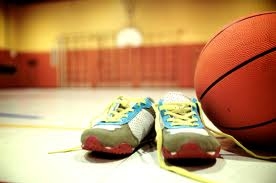By NCHPAD
Guest written by Tamika Jones, M.Ed., CAPE
Organizations across the United States are heavily pushing for more physical activity in physical education (PE) classes, after-school programs and community-based programs for children. This will also mean a greater push for the availability of adapted physical education (APE) services, which are so important for youth with disabilities.
The President’s Council on Fitness, Sports and Nutrition reported that physical activity is 4.5 times lower for children and youth with disabilities compared to their peers without disabilities. The purpose of PE is for students to learn, practice, and master skills that will allow them to be physically active for a lifetime. While PE has the same purpose, APE curriculums allow for students to work on a more individualized curriculum that focuses on each student’s strengths, needs, and interests.
As a trained adapted physical educator, I have noticed that students experience a higher level of success while in APE, as well as in general PE classes with one-on-one assistance. Students who were enrolled in my self-contained APE classes really benefited from the smaller class size that offered personal adaptations and a more defined class structure. Most importantly, APE services provide students with ample opportunities to increase their confidence in a physical activity setting and to improve their overall self-esteem.

The Individuals with Disabilities Education Act (“IDEA”) is a Federal law designed to ensure that all children with disabilities, from birth to 21 years of age, have free appropriate public education available to them. This includes early intervention, special education, and related services designed to meet their individual needs. IDEA requires that PE services, specially designed if necessary, must be made available to every child with a disability receiving free public education. In accordance with the law, the term “physical education” includes special education, APE, movemen
t education, and motor development. IDEA states that if specially designed physical education is prescribed in a child’s individual education program, that the public agency must be responsible for the child’s education by providing the necessary services directly or making arrangements for services to be provided through other public or private programs free of charge to the child and parents.
Students who may not qualify to receive special education services, but still require disability-appropriate educational services may still be eligible. Section 504 of the Rehabilitation Act of 1973 requires that the public agency responsible for the child’s education provide students with disabilities-appropriate educational services designed to meet the individual’s needs. Under these requirements, a student with a Section 504 plan can quality for APE services as well.
In today’s world, where the number of youth with disabilities is growing, it is important that these individuals are provided with the same quality educational experiences as their nondisabled peers. Physical education services should be no different. APE provides youth with disabilities a means to master physical education goals. The individualized PE program allows students to move at their own pace, while in a PE setting that fits their individual needs. By modifying instructions and equipment, students with disabilities are able to achieve success while building strength, endurance, and skill levels that will hopefully keep them physically active for the rest of their lives.
About the Guest Writer
Tamika Jones, M.Ed., CAPE, received her Bachelor of Science Degree from the University of Michigan in Ann Arbor, MI and Master of Education in Kinesiology in Adapted Physical Education from the University of Virginia in Charlottesville, VA. She is a certified Physical Educator with the Adapted Physical Education National Standards. Tamika began working at the National Center on Physical Activity and Disability as a Visiting Information Specialist in October 2011.